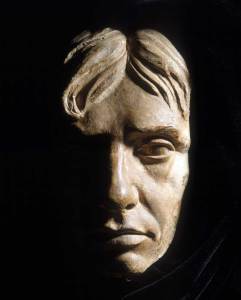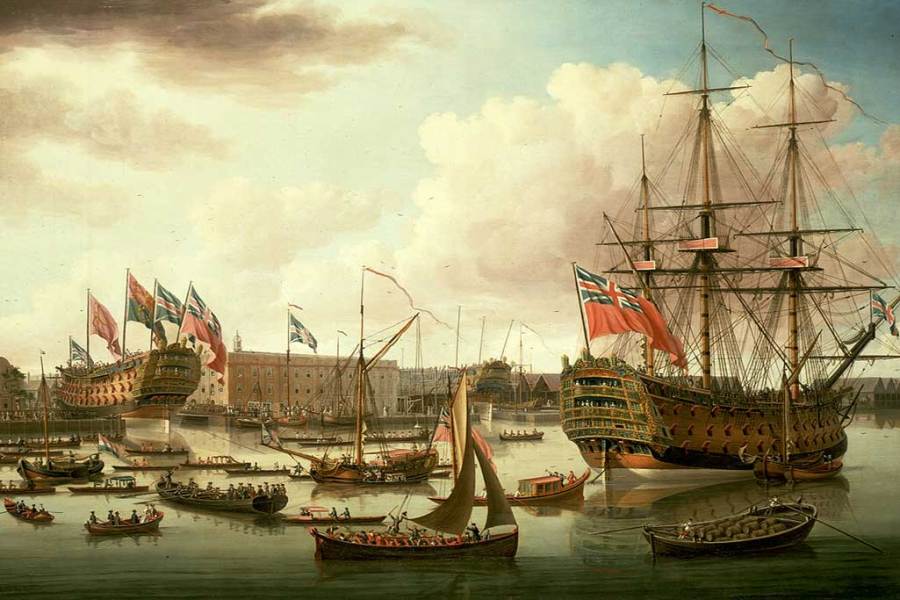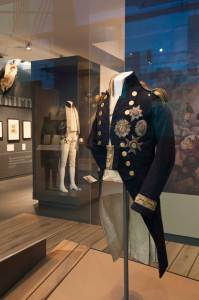In 1796, nearly a decade before the Battle of Trafalgar, William Cobbett recollected his feelings upon first seeing the Channel Fleet, anchored at Spithead a few miles from where he had stood on Portsdown Hill. A year later Spithead would become the site of one of the most famous mutinies in history, but from afar the view was delightful:
I had formed my ideas of a ship, and of a fleet; but, what I now beheld, so far surpassed what I had ever been able to form a conception of, that I stood lost between astonishment and admiration. I had heard talk of the glorious deeds of our admirals and sailors, of the defeat of the Spanish Armada, and of all those memorable combats, that good and true Englishmen never fail to relate to their children about a hundred times a year.
While Cobbett connects the wonder he felt to the unusual experience of seeing a story spring to life before his eyes, one also detects a note of peevishness: even a point of national pride may become strained with reiteration. Like Cobbett, ‘Nelson, Navy, Nation’, the impressive new permanent gallery at the National Maritime Museum, is preoccupied with the way material objects can both channel heroic naval and national myth and bring them back to reality.
Accordingly, the gallery exhibits a dual focus, with displays designed to draw together ephemeral and iconic materials. Nelson’s pigtail is on display. His coat with the hole shot through the left shoulder occupies the far end of the gallery. Positioned where the altar would be in a church, it presides over the room. Other displays, however, include articles of decided irreverence: a coat made for a more sedentary admiral, for instance, with space for an enormous gut, and an ancient bit of ship’s biscuit that the viewer is informed would have stayed edible for months, but which seems to have lasted considerably longer.
Very occasionally, however, the gallery is in danger of drifting too far toward idealisation and hagiography. Key pieces such as Benjamin West’s The Immortality of Nelson and Arthur William Devis’s The Death of Nelson depict the hero in apotheosis. In the latter, he is surrounded by shipmates, spectators, whose attitudes of veneration and awe may be equally suitable for visitors to this gallery. The three terms of the gallery’s title could of course be read as either description or argument: a table of contents or a line of descent.
In addition, the vision of the lower decks that the curators provide is surprisingly inviting, stressing the possibilities of advancement and prize money. The only substantial acknowledgement of Nelson’s adversaries is a picture of Napoleon by Sir Charles Lock Eastlake, hung on the back wall. In it Napoleon is pictured propped against the union flag on the Bellerophon. He is rotund and looks a little like Tenniel’s Humpty Dumpty, ready for a fall.

Life mask of Vice-Admiral Horatio Nelson (c. 1800), maker unknown © National Maritime Museum, London
The exhibition is at its best where the curators are most conscious of the ways in which the Navy could be thought of as at once a real and an imaginary institution during this period. In particular, a section devoted to Nelson’s funeral cleverly balances the grandeur of the event with the tawdriness of its commercial spinoffs. Opposite walls show reverential paintings of his interment and the tickets sold to the event; Nelson’s life-mask jostles for space with playbills, toy bricks showing the funeral procession, and commemorative mugs. Here, as in a number of other places in the gallery, the relationship of the viewer to the items on display becomes a compelling theme.
The exhibition opened on 21 October – Trafalgar Day. That the 208th anniversary of Nelson’s victory should be marked in such a way makes a prophecy of Cobbett’s observation that stories of naval triumph shall ‘never fail’ to be related. ‘Nelson, Navy, Nation’ wonderfully returns to and embellishes the most iconic such account. But its success is most pronounced when, in the retelling, it suggests new ways of understanding our relationship to these themes.
‘Nelson, Navy, Nation’ is a new permanent gallery at the National Maritime Museum, Greenwich.
Unlimited access from just $16 every 3 months
Subscribe to get unlimited and exclusive access to the top art stories, interviews and exhibition reviews.















![Masterpiece [Re]discovery 2022. Photo: Ben Fisher Photography, courtesy of Masterpiece London](http://www.apollo-magazine.com/wp-content/uploads/2022/07/MPL2022_4263.jpg)
Is the Stirling Prize suffering from a case of tunnel vision?